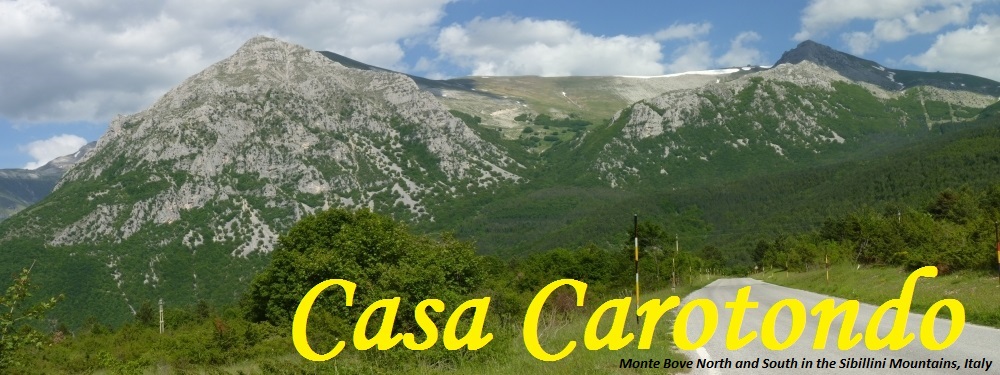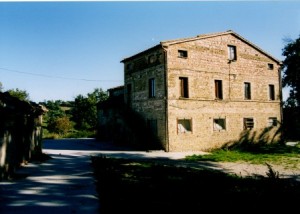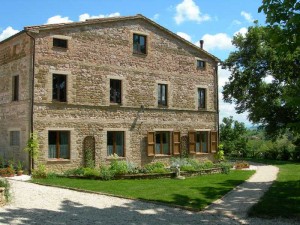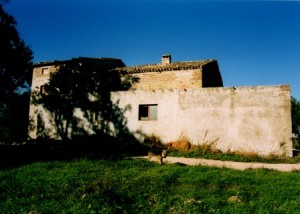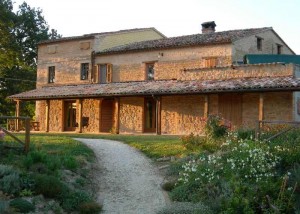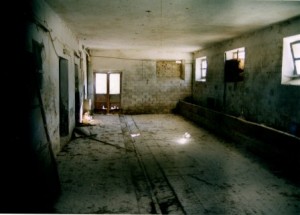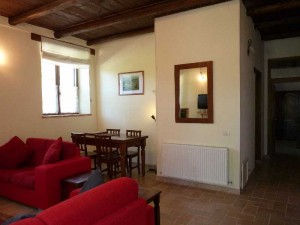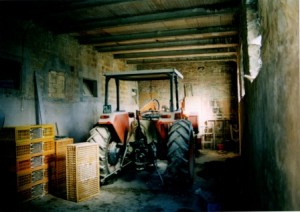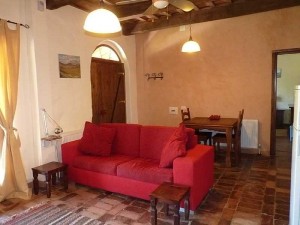I shall start with a disclaimer. We rent holiday apartments, we do not offer estate agency or renovation services. However we did renovate/are still renovating our own house and can therefore provide some insight into the process. The aim is not to discourage or spur you on, simply, to give you an account of our experience. I should also add that we did not come here specifically to start a renovation project. One of my conditions on buying the house was that we get the builders in to do at least the heavy duty work. However we started with a laughably small budget for a house of 400 sqm. Hindsight is a wonderful thing and it would have been better to employ builders to do, at least, the basics despite the expense. Instead we have kept the costs down but the whole project has taken a long time and we still haven’t finished. I would also like to reassure prospective guests that building work only takes place in the winter!
Before you start your project take a good long hard look at the building you have bought, measure it up and decide exactly what you want to do with it. You will need to employ the services of a geometra to oversee the work and deal with the bureaucracy. They seem to have set ideas of how a house should be renovated, so if you are not keen on cotto tiles and dark beams you will need to make this plain from the start. Italy does not have national building regulations as in the UK. These regulations are still very much governed by the commune, so it is useful to find yourself a geometra, who knows his (they are usually male) way around the commune offices. Also he will be guiding and working with you through the whole project, so you should find one that you think you will be able to get on with well. Language skills are another issue, if you do not speak Italian.
As far as we understand there are two types of request you can make to your commune regarding your new home. You can either go for full planning permission, if the property is to be rebuilt or for a DIA (Dichiarazione Inizio Attivita’ ), if you are just “repairing” the house. The latter involves less paperwork and should be issued within 30 days. Once you have the paperwork it is worth talking to your geometra about any discounts in VAT that may be applicable, when buying materials for the house. Sometimes grants are available, although these days they seem only to apply to registered farmers. There are also tax concessions when buying things like a wood burning stove, which are considered environmentally friendly. However these are generally just a reduction in your income tax, so not worth worrying about unless you are paying tax here.
When considering what to do with your house, you should remember that, as a general rule the volume of a house cannot be extended, although it can be relocated. Ceilings should be 2.4m high. Apparently putting a loggia around the house is usually ok. A lot of rules and regulations are common sense such as openings not being too near the corners of buildings. Other rules are governed by the ever present threat of earthquakes. Until recently the solution to earthquakes seem to be to tie the house together with concrete and reinforcing bar, now theorists are turning to other solutions. If you are converting a building or even a part of a building that was previously not used for habitation, you will have to pay for “change of use”. This is charged by the commune on the volume of the space and the volume is calculated from the outside of the wall – in old houses sometimes 0.5m wide. The disconcerting thing is that as far as we could ascertain, none of these regulations are available to the general public to read. Even the geometra at times seemed uncertain about regulations and had to consult the commune.
Your geometra should be able to find suitable builders and other trades people for you. They will quote you for the work using nationally set rates, which are then generally discounted. Quotes are usually by the square meter or for things like scaffolding by the linear meter. We have heard that it is difficult even for the most determined to get a detailed quote from their builder. Certainly the impression we got from our one quote was that they had submitted the standard estimate for redoing the roof and floors adjusted only by the square meterage of the house. From friends we have heard it is difficult getting the builders on site. This it seems is because they have to juggle jobs according to the size of the project and the importance of the client as well as the need to keep employed the whole time. However once on site the builders generally seem to work very hard and do a good job. We had the same problem getting electricians and plumbers on site. At least two phone calls and a few weeks were required to get them to turn up. When they arrived they were always polite and efficient but getting the paperwork out of them – much needed certificates – was always difficult.
Doing the building work yourself, as our example demonstrates, is a possibility but your geometra will have to agree to this. Although our geometra had great faith in Rob’s ability to do the work, he, apparently had problems finding a structural engineer to work with us. Doing the job yourself does mean that you need to source all the materials and price them up. This is a lot of work and required extensive use of the dictionary. Some things, such as tools, are often cheaper if bought in the UK or Germany even after payment of courier expenses. The internet, and most importantly EBAY, is slowly taking off in Italy, which is of great use; although irritatingly a lot of websites do not have prices on them! It should also be added that DIY is a new but quickly evolving phenomenon in Le Marche. Locals still tend to turn to a trusted professionista rather than do it themselves. Marketing is also still in its infancy here. It is still assumed that as you have lived here all your life you will know where to buy what you need. If you don’t know, you will ask for a friend’s recommendation rather than look up a supplier or tradesman in the yellow pages, for example.
The Italians do some building work differently to the UK, so research should be done before starting any job – even the plaster is different! One policy is to become friends with the owner of your local builder’s merchant to find out from him the best way of going about a job. Plumbing and electrics are two important examples of different methodology. Electrics are best done by a professional as you will need a certificate from him to get the house signed off by your geometra. If you decide to do the work yourself, take a look around a DIY store first to get an idea of what is involved before heading to the specialist store, where the prices are generally lower. Plumbing you can do yourself but anything to do with gas has to be certified and is best done by the professionals.
Once you have finished your house it will have to be signed off by the relevant authorities. Your geometra will get this done for you. It involves him producing a lot of detailed documentation, which has to taken to various offices, both at provincial and commune level. Patience is required – this can take some time to get done. You may find your geometra has more important or interesting work to do even if you owe him money! The sign-off is required if you want to sell or rent the property, so you may find yourself gritting your teeth and spending a lot of time harassing him on the phone. Is it all worth it? Probably yes … you have to remind yourself that any renovation project is, at times, a painful process. In Italy the pain is accentuated by the difficulty of dealing with a foreign language and different ways of working. An uncomfortable introduction to life here, but at the end of it you will have a beautiful home in some outstanding countryside.
